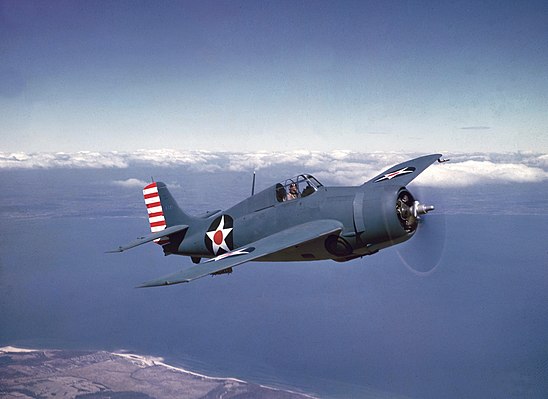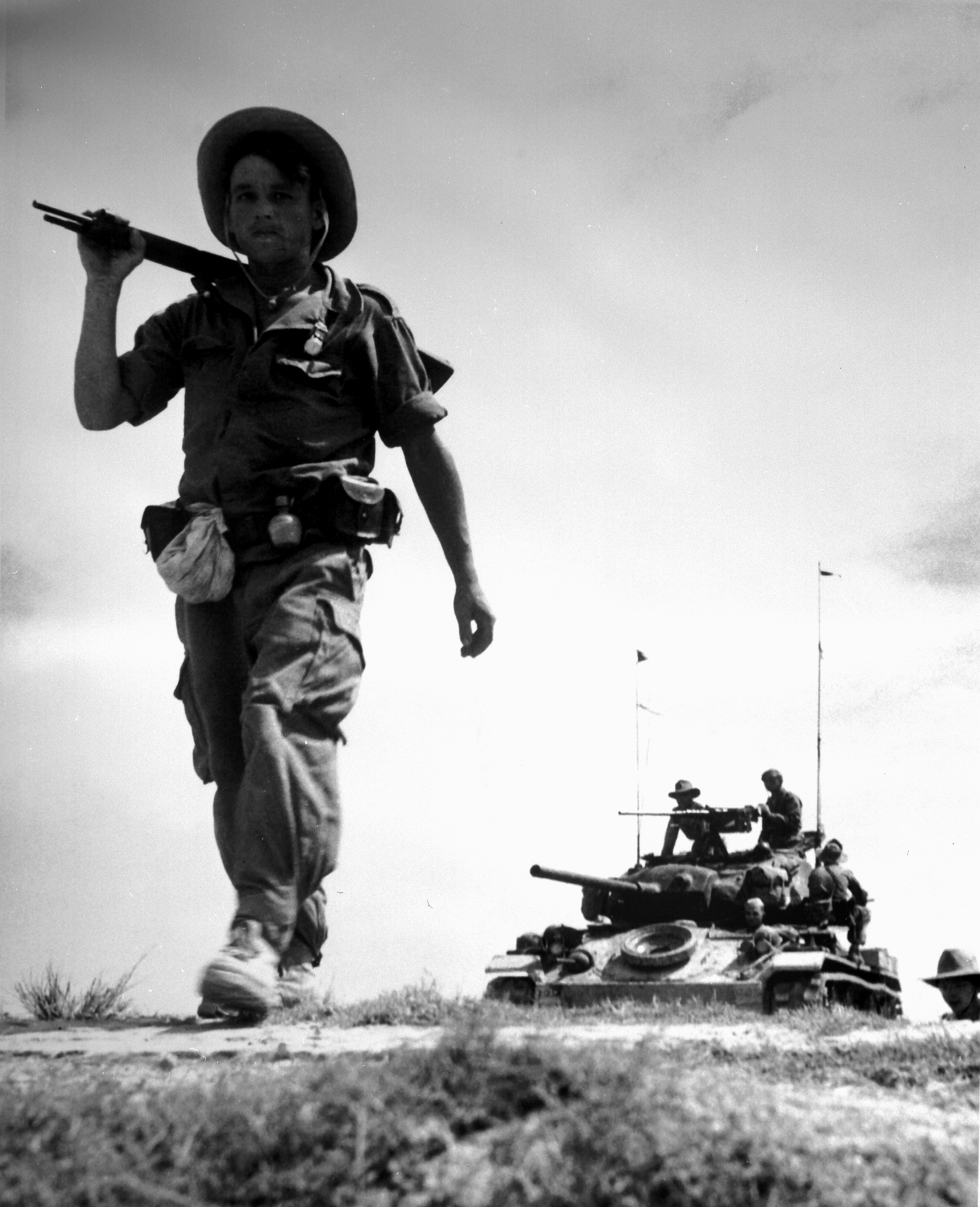
F4F Wildcat - First Year in the Pacific: September-December 1942 p.2
F4F Wildcat - first year in the Pacific. Wildcats parked on the edge of the Fighter 1 runway on Guadalcanal.
The American invasion of Guadalcanal in August 1942 opened a new front in the South Pacific and led to the third ever carrier battle in the eastern Solomons later that month. However, the burden of fighting for Guadalcanal fell on aircraft operating from ground bases.
At the time, two squadrons of Marine Wildcats (VMF-223 and -224) and one squadron of the US Navy (VF-5) were stationed on the island, fending off massive raids by the Japanese Air Force based in Rabaul, New Britain.
The arrival of 11 VF-24 fighters that landed from the USS Saratoga after damaging the ship in late August tripled Wildcat's strength on the island on 5 September. At that time, the aviation units of the Imperial Navy in Rabaul, grouped in the 11th Air Fleet, were armed with about 100 serviceable aircraft, including 30 Riccos (twin-engine bombers) and 45 A6M Zero fighters. However, only the A6M2 Model 21 had sufficient range to clear Guadalcanal. The newer A6M3 Model 32 was primarily used to defend Rabaul from US Air Force air strikes operating from New Guinea.
At noon on September 12, the expedition of 25 rikko (from Misawa, Kisarazu and Chitose Kokutai) arrived. They were accompanied by 15 Zeros from the 2nd and 6th Kokutai. Having reached the vicinity of the island, the bombers switched to a gentle dive flight, descending to an altitude of 7500 m to gain speed. The Japanese were in for a big surprise. As many as 20 Wildcats VF-5s and 12 from both Marine squadrons took off from Henderson Field. The Zero pilots tried to keep them at bay, but were unable to keep track of the 32 fighters. As a result, the Japanese lost six Rikko and one Zero piloted by checkmate Torakiti Okazaki of 2. Kokutai. Shot down by Lieutenant (Junior) Howard Grimmell of VF-5, Okazaki fled towards Savo Island, dragging a jet of airborne fuel behind him, but was never seen again.
At dawn on September 13, the aircraft carriers Hornet and Wasp delivered 18 Wildcats to Guadalcanal for the squadrons stationed on the island. Meanwhile, information reached Rabaul that Japanese troops had captured Henderson Field, the island's main airport. To confirm this, two Rikkos, accompanied by nine fighters, went to the island. Several Zeros, seeing the Wild Cats rising towards them, hit the top, knocked down one, and drove the rest into the clouds. However, there, the confident and battle-ready pilots of the elite Tainan Kokutai engaged in a long firefight low to the ground, and when more Wildcats joined them, they were killed one by one. Four died, including three aces: Mar. Toraichi Takatsuka, Kazushi Uto's assistant and Susumu Matsuki's friend.
Reports from the two Rikko crews were conflicting, so on the morning of the following day, September 14, three A6M2-N (Rufe) went to Henderson Field to determine who was in control of the airport. They were seaplanes operating from the Recata Bay base on the Santa Isabel coast, just 135 miles from Guadalcanal. They posed a real threat - on the evening of the previous day, they shot down the Fearless approaching the landing. This time one A6M2-N crashed over the airport and attacked an R4D transport that had just taken off from Henderson Field. Before the Japanese could do any damage, it was shot down by VF-5 pilots, as were two other A6M2-Ns. One was beaten by Lieutenant (Second Lieutenant) James Halford. As the Japanese pilot bailed out, Halford unceremoniously shot him in the air.
The Japanese did not give up. In the morning, 11 Zeros from the 2nd Kokutai were sent from Rabaul to “vomit” into the sky over Guadalcanal, and a quarter of an hour after them, a Nakajima J1N1-C Gekko high-speed reconnaissance aircraft. One of 5. Kokutai's aces, boatswain Koichi Magara, was killed in a skirmish with over twenty VF-223 and VMF-2 Wildcats. Shortly thereafter, a reconnaissance Gekko appeared and began hovering over Henderson Field. The flight crew did not have time to report the established - after a long chase, he was shot down by Second Lieutenants Kenneth Fraser and Willis Lees from VMF-223.
